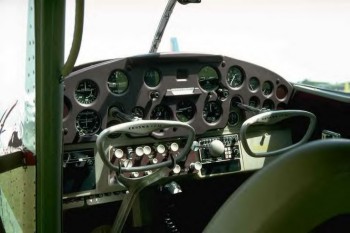|

Cessna series C120, C140, C170, C190, C195 performance and specifications

the Cessna 170 (profile)



Early in 1948,
aviation publications across the country were
publishing press releases similar to the
following, which appeared in the February issue of
FLYING magazine:
“Wichita, Kansas - A full line of Cessnas will
roll off the lines this year. Deliveries of the
new 1948 model Cessna began early in January...
The big news in the way of completely new aircraft
at Cessna this year is the Model 170, a four-place
plane powered by a 145 hp Continental engine.
Selling at $5,475, this new 170 is the low-cost
four-placer to complete Cessna’s full line.
Deliveries are expected to begin in March.”
During the late 1940s through the mid-1950s over
5,000 Cessna 170s were manufactured and well over
half that number survive today. This alone should
indicate that this aircraft has certain qualities
that make it a desirable aircraft to own and has
also gained it recognition as a Neo-Classic in
various aircraft organizations.
The Cessna 170 began it’s life looking much like
it’s little brother, the Cessna 140. In fact, the
1948 C170 is quite often mistaken for the smaller
two-place C140 by the casual observer. In 1948,
Cessna expanded and stretched the 140 to make it a
four-place aircraft and called it the 170. It had
no dorsal fin, had fabric-covered wings, vee-type
wing struts and three C140 fuel tanks to give it
the necessary range for it’s larger engine. The
engine used was a Continental C145 (later
designated the O-300A) and would be used
throughout the entire production run of Cessna
170s.

The first production model was serialized #18001,
but both it and #18002 were experimental and
eventually scrapped by Cessna. The first C170
produced for sale to the public was SN18003, which
rolled out of the factory doors on February 6,
1948. She made her first trip on February 27,
1948.
Beginning very late in 1948 with SN18730, Cessna
began producing the all-metal, slicked-up version
with a single strut and a dorsal fin identical to
the one used on the C195. The price new was
$5,995, and it was called the Model 170A. The
plane had an all-metal wing with slightly larger
flaps which ran from zero to 50 degrees. The 170A,
which was produced through 1951, is commonly
called the “straight wing” model because, unlike
later 170Bs, the C170A has no wing dihedral. There
were very few changes made in the C170A in it’s
three years of production.
The Cessna 170B was introduced in 1952 and
continued in production with several changes until
production on the series ended in 1956. The most
obvious change from the 170/170A is the large
semi-Fowler flaps similar to those used on the
L-19. The flaps were labelled “Para-lift” by
Cessna, but the term “barn door” is the more
common description. The flaps originally had four
settings: 0, 20, 30 and 40 degrees. Beginning in
1955, Cessna added a 10 degree flap setting.
The dihedral angle was increased to 3 degrees on
the 1952 and all subsequent models, and more twist
was given to the wing between the strut and the
tip. The stabilizer and elevator shape was changed
and the aerodynamic balance area was increased. A
mass balance, enclosed in the aerodynamic balance
section, was added, requiring less control
pressure.
The Cessna 172 was introduced in 1956, and
tricycle gear took over the general aviation
scene. Since Cessna had parts left for some C170s,
they continued to produce the C170B until the
parts were gone.
As for performance, the stock Cessna 170 will
pretty much do what the Owner’s Manual says. It
will get into a much shorter field than it will
get out of at gross weight. It will cruise in
comfort at about 118 mph at 65% power at 4,000’ -
7,000’ and burn about 8 gph with engine properly
leaned.
Most C170s will take two adults, two children, 100
pounds of baggage and full fuel and still be legal
for a gross weight of 2200 pounds. The C170 will
climb 500-700 fpm at this weight and land at about
52 mph.
The Cessna 170 is a good, honest taildragger and
has had very few AD notes on either the airframe
or engine.
|
